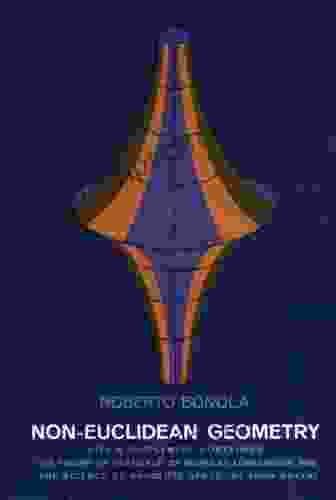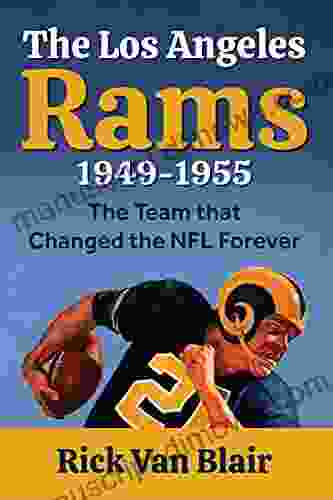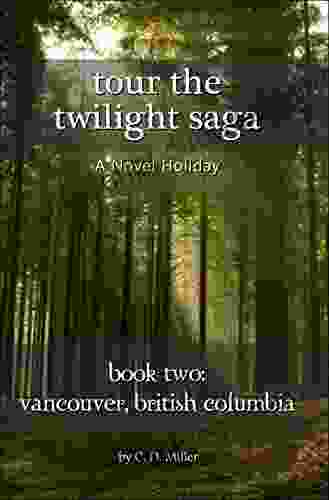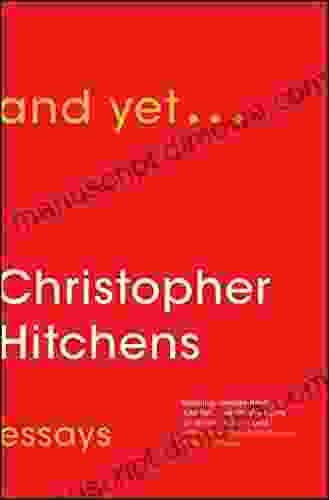Non-Euclidean Geometry: Explore the World Beyond Euclidean Horizons

4.5 out of 5
| Language | : | English |
| File size | : | 6941 KB |
| Text-to-Speech | : | Enabled |
| Enhanced typesetting | : | Enabled |
| Print length | : | 286 pages |
| Lending | : | Enabled |
| Screen Reader | : | Supported |
In the realm of mathematics, Euclidean geometry has long reigned supreme, dictating our understanding of space, shape, and reality. However, beneath the surface of Euclidean certainty lies a hidden world of non-Euclidean geometries, challenging our most fundamental beliefs about space and opening up new vistas of mathematical exploration.
Non-Euclidean geometry emerged in the 19th century, shattering the foundations of Euclidean geometry and forever altering our perception of the world. This revolutionary concept challenged the long-held assumption that the axioms of Euclidean geometry - such as the parallel postulate - were universally true and unbending.
The Birth of Non-Euclidean Geometry
The seeds of non-Euclidean geometry were sown by the brilliant minds of three mathematicians: Carl Friedrich Gauss, János Bolyai, and Nikolai Lobachevsky. All three independently discovered that the parallel postulate, which states that given a line and a point not on the line, there is exactly one line parallel to the given line through the point, could be replaced by other axioms, leading to new and fascinating geometries.
Gauss, a renowned mathematician and physicist, refrained from publishing his findings on non-Euclidean geometry, fearing potential controversy. However, Bolyai, a young Hungarian mathematician, boldly published his work in 1832, introducing the world to hyperbolic geometry, a non-Euclidean geometry where the parallel postulate does not hold true.
Not to be outdone, Lobachevsky, a Russian mathematician, independently developed his own version of hyperbolic geometry, further refining its principles. Together, Bolyai and Lobachevsky established the foundations of hyperbolic geometry, a geometry in which lines can diverge in multiple directions, creating a world of infinite curvatures and unusual shapes.
Variations of Non-Euclidean Geometries
Hyperbolic geometry is just one of the many non-Euclidean geometries that exist. Another important non-Euclidean geometry is elliptic geometry, which was developed by Bernhard Riemann in the mid-19th century. In elliptic geometry, the parallel postulate is replaced with the assumption that there are no parallel lines, and all lines eventually intersect.
Spherical geometry is another non-Euclidean geometry that has been studied extensively. Spherical geometry is the geometry of the surface of a sphere, where the concept of parallel lines does not apply, and all lines eventually meet at the poles.
Applications of Non-Euclidean Geometry
While non-Euclidean geometries may seem abstract and theoretical, they have found numerous applications in various fields, including:
- Cosmology: Non-Euclidean geometries have been used to model the shape and curvature of the universe.
- General relativity: Non-Euclidean geometries are essential for understanding the curvature of spacetime predicted by Einstein's theory of general relativity.
- Differential geometry: Non-Euclidean geometries provide a framework for studying the geometry of surfaces and curves in multi-dimensional spaces.
- Computer graphics: Non-Euclidean geometries have been used to create realistic 3D graphics and virtual worlds.
Non-Euclidean Geometry in the Classroom
In recent years, non-Euclidean geometry has gained increasing attention in mathematics education. By introducing students to non-Euclidean geometries, educators can expand their understanding of geometry, develop their spatial reasoning skills, and foster their creativity.
Non-Euclidean geometry can be taught at various educational levels, from high school to university. Through interactive activities, hands-on models, and computer simulations, students can explore the fascinating concepts of non-Euclidean geometries and their applications in the real world.
Non-Euclidean geometry, once considered an outsider in the mathematical realm, has emerged as a powerful tool for understanding the complexities of our universe. From hyperbolic and elliptic geometries to spherical geometries, the world beyond Euclid's axioms offers endless possibilities for exploration and discovery.
As we continue to delve into the vast and intricate tapestry of geometry, non-Euclidean geometries will undoubtedly play an increasingly prominent role in shaping our understanding of space, shape, and reality itself.
4.5 out of 5
| Language | : | English |
| File size | : | 6941 KB |
| Text-to-Speech | : | Enabled |
| Enhanced typesetting | : | Enabled |
| Print length | : | 286 pages |
| Lending | : | Enabled |
| Screen Reader | : | Supported |
Do you want to contribute by writing guest posts on this blog?
Please contact us and send us a resume of previous articles that you have written.
 Book
Book Novel
Novel Page
Page Chapter
Chapter Text
Text Story
Story Genre
Genre Reader
Reader Library
Library Paperback
Paperback E-book
E-book Magazine
Magazine Newspaper
Newspaper Paragraph
Paragraph Sentence
Sentence Bookmark
Bookmark Shelf
Shelf Glossary
Glossary Bibliography
Bibliography Foreword
Foreword Preface
Preface Synopsis
Synopsis Annotation
Annotation Footnote
Footnote Manuscript
Manuscript Scroll
Scroll Codex
Codex Tome
Tome Bestseller
Bestseller Classics
Classics Library card
Library card Narrative
Narrative Biography
Biography Autobiography
Autobiography Memoir
Memoir Reference
Reference Encyclopedia
Encyclopedia Michelle Lynn
Michelle Lynn Nancy Loewen
Nancy Loewen Christopher Davies
Christopher Davies Frances Itani
Frances Itani Margaret Coel
Margaret Coel Iain Bamforth
Iain Bamforth Chef Tummy
Chef Tummy Michael Zink
Michael Zink Charley Hester
Charley Hester Taff Thomas
Taff Thomas Christine Pauls
Christine Pauls Chris Lundgren
Chris Lundgren Christopher D Hudson
Christopher D Hudson Muhammad Zulqarnain
Muhammad Zulqarnain Emerson Robbins
Emerson Robbins Marc Steyn
Marc Steyn Christine Burns
Christine Burns Mattias Labriel
Mattias Labriel Christine Jordan
Christine Jordan Takahito Kaneyoshi
Takahito Kaneyoshi
Light bulbAdvertise smarter! Our strategic ad space ensures maximum exposure. Reserve your spot today!
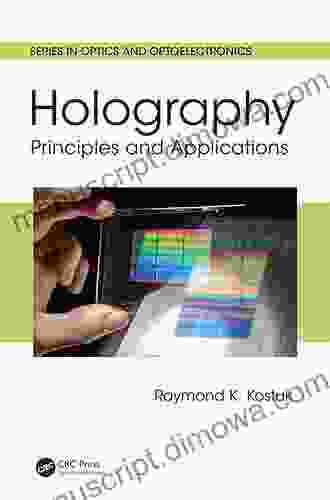
 Floyd RichardsonUnveiling the Intricate World of Optics and Optoelectronics: Methods and...
Floyd RichardsonUnveiling the Intricate World of Optics and Optoelectronics: Methods and...
 Ismael HayesLegendary Locals of Chugiak Eagle River: Uncover the Enchanting History of...
Ismael HayesLegendary Locals of Chugiak Eagle River: Uncover the Enchanting History of... Ashton ReedFollow ·3k
Ashton ReedFollow ·3k Stephen KingFollow ·11.3k
Stephen KingFollow ·11.3k Evan SimmonsFollow ·6.5k
Evan SimmonsFollow ·6.5k Ibrahim BlairFollow ·3.5k
Ibrahim BlairFollow ·3.5k José MartíFollow ·7.6k
José MartíFollow ·7.6k Geoffrey BlairFollow ·5.8k
Geoffrey BlairFollow ·5.8k Herb SimmonsFollow ·2.6k
Herb SimmonsFollow ·2.6k Barry BryantFollow ·18.7k
Barry BryantFollow ·18.7k

 Frank Mitchell
Frank MitchellStep Onto the Dance Floor of Spanish Fluency with...
Are you ready to take a...
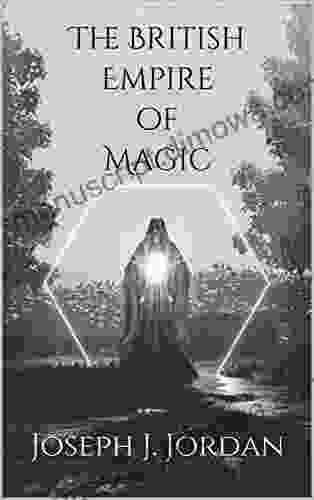
 Jarrett Blair
Jarrett BlairEscape into the Enchanting Realm of "The British Empire...
Embark on an Extraordinary Literary Journey...

 Gregory Woods
Gregory WoodsHitler Olympics: The 1936 Berlin Olympic Games
The 1936 Berlin Olympic Games...
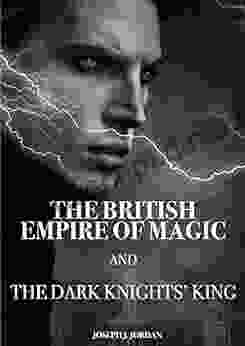
 Philip Bell
Philip BellThe British Empire of Magic and the Dark Knights King: An...
In the tapestry of literary...

 Jacob Hayes
Jacob HayesPerilous Journey of Danger and Mayhem: A Thrilling...
In the untamed wilderness,...
4.5 out of 5
| Language | : | English |
| File size | : | 6941 KB |
| Text-to-Speech | : | Enabled |
| Enhanced typesetting | : | Enabled |
| Print length | : | 286 pages |
| Lending | : | Enabled |
| Screen Reader | : | Supported |


